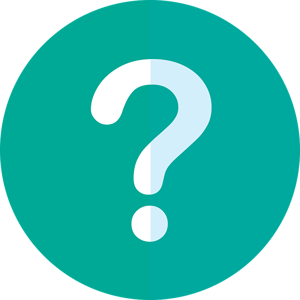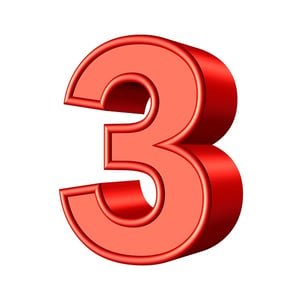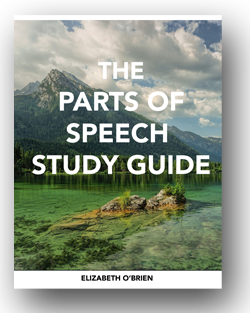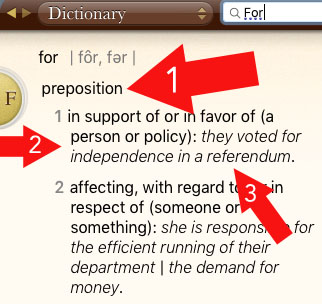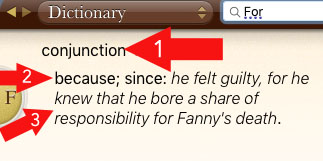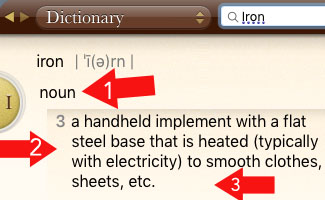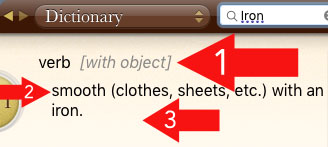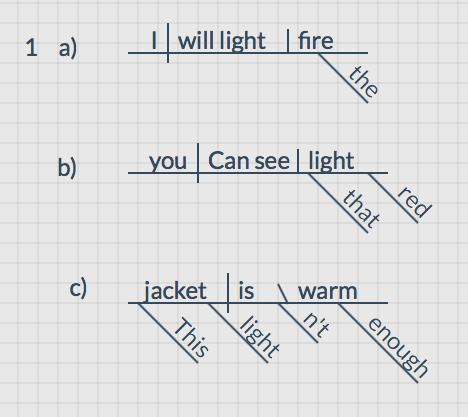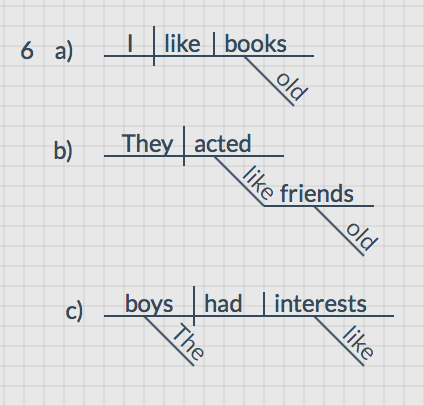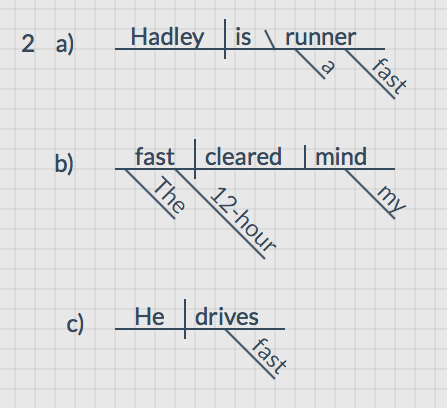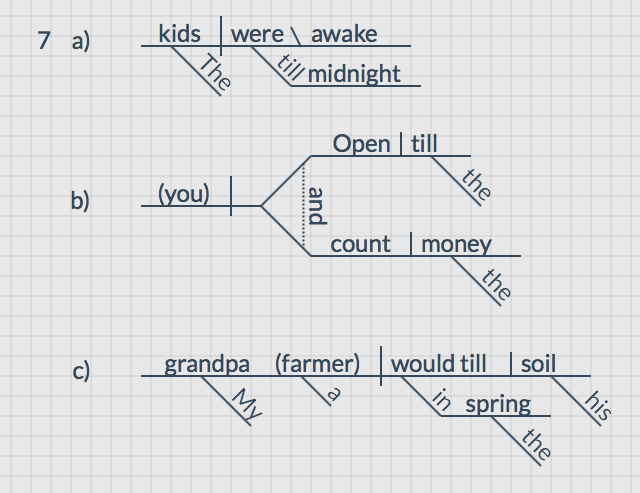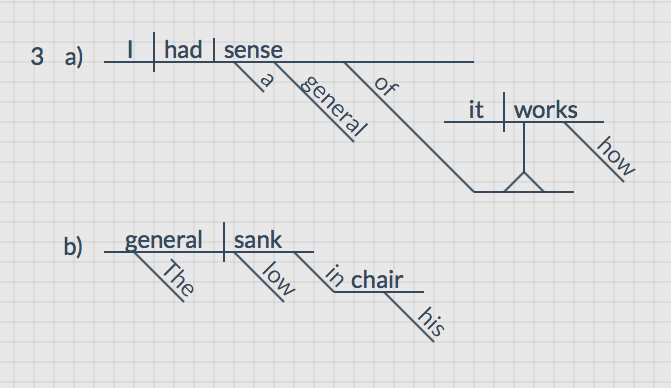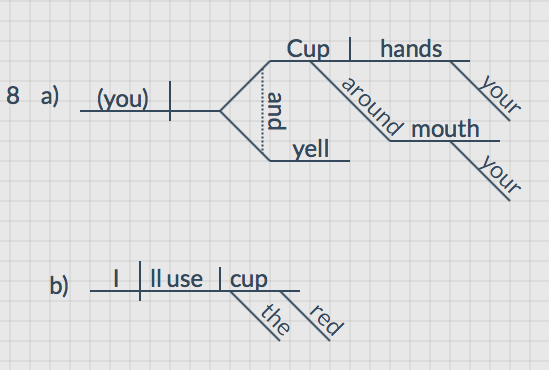The word “THAT” can be used as a Definite Article, a Conjunction, an Adverb, Pronoun, and Adjective. Take a look at the definitions and examples below to learn how “THAT” works as different parts of speech.
- Definite Article
“That” is classified as a definite article when it is used to indicate something/someone specific that the listeners or readers already know. For instance, read the sample sentence below:
“Pick up that book on the floor.”
The person being talked to knows exactly what “book” the speaker is referring to.
Definition:
a. refers to a specific person or thing, assuming that the person being addressed understands or is familiar with it
- Examples:
- Look at that old woman
- She lived in New York at that time.
- Where is that friend of yours?
2. Conjunction
Sometimes, “that” can also serve as a conjunction by combining two clauses. For instance, in the sentence:
“I bought the materials that are required for the project.”
“That“ is used to introduce the clause “…are required for the project.” It combines the dependent clause with the independent clause, “I bought the materials…”
Definition:
a. used to introduce a clause that is the subject or object of a verb
- Examples:
- He said that he was hungry.
b. used to introduce a clause that completes or explains the meaning of a previous noun or adjective or of the pronoun it
- Examples:
- She was so exhausted that she couldn’t think straight.
c. used to introduce a clause that states a reason or purpose
- Examples:
- The boss seems pleased that I wanted to pursue with the training.
3. Adverb
The word can also be used as an adverb, especially in verbal communication. It is normally used to show the intensity of a particular adjective. Take for example the sentence below:
“He is that old.”
In this sample sentence, the word “that” somehow intensifies and shows the degree of the adjective “old.”
Definition:
a. to the degree that is stated or suggested
- Examples:
- It wasn’t that difficult.
b. to the degree or extent indicated by a gesture
- Examples:
- She wouldn’t go that far.
c. to a great degree
- Examples:
- It was that wide, perhaps even wider.
4. Pronoun
In some cases, the word “that” also functions as a freestanding pronoun. Look at the sample sentence below:
“That’s exactly what I thought.”
It can be presumed that the word “that” is representing or replacing a specific thought.
Definition:
a. used to identify a specific person or thing observed by the speaker
- Examples:
- That is my brother with a new car.
b. referring to a specific thing previously mentioned, known, or understood
- Examples:
- It’s not as bad as all that.
- All the people that were left behind became infected with the virus.
5. Adjective
The word “that” functions as an adjective when it is used to modify a noun. It is also useful in clarifying which noun the speaker is referring to in the sentence. Take for example, the sentence below:
“That cat is so adorable.”
The word “that” modifies “cat” by emphasizing that it is the particular noun being referred to.
Definition:
a. used to indicate which person, thing, or idea is being shown, pointed to, or mentioned
- Examples:
- That building is the oldest in the city.
- Do you want this bag or that one?
b. used to indicate the one that is farther away or less familiar
- Examples:
- I don’t know how it got that way.
I know that «that» can function as many different parts of speech, so what part of speech is it in the phrase «the stuff that dreams are made of»?
RegDwigнt
96.4k39 gold badges305 silver badges399 bronze badges
asked Nov 14, 2013 at 4:53
ODO believes it to be a relative pronoun:
that pronoun (plural those)
5 (plural that) [relative pronoun] used to introduce a defining clause, especially one essential to identification:
• instead of ‘which’, ‘who’, or ‘whom’:
the woman that owns the place
• instead of ‘when’ after an expression of time:
the year that Anna was born[ODO]
The example “instead of which, who or whom” exactly matches your sentence.
answered Nov 14, 2013 at 7:21
Andrew Leach♦Andrew Leach
98.4k12 gold badges188 silver badges306 bronze badges
2
«That» introduces a sentence complement to a noun, as in «the fact that we left», where the sentence «we left» is complement to «fact». When the complement is a relative clause, there is a common alternative analysis that makes «that» a relative pronoun, yet this is not right, because relative pronouns need not occur at the beginning of a relative clause. «That» in relative clauses, unlike relative pronouns, always comes at the very beginning of the clause. Compare, «the facts with which we are familiar», *»the facts with that we are familiar», «the facts that we are familiar with».
answered Aug 13, 2015 at 18:38
Greg LeeGreg Lee
17.1k2 gold badges17 silver badges39 bronze badges
When you start breaking it down, the English language is pretty complicated—especially if you’re trying to learn it from scratch! One of the most important English words to understand is the.
But what part of speech is the word the, and when should it be used in a sentence? Is the word the a preposition? Is the a pronoun? Or is the word the considered a different part of speech?
To help you learn exactly how the word the works in the English language, we’re going to do the following in this article:
- Answer the question, «What part of speech is the?»
- Explain how to use the correctly in sentences, with examples
- Provide a full list of other words that are classified as the same part of speech as the in the English language
Okay, let’s get started learning about the word the!
In the English language the word the is classified as an article, which is a word used to define a noun. (More on that a little later.)
But an article isn’t one of the eight parts of speech. Articles are considered a type of adjective, so «the» is technically an adjective as well. However, «the» can also sometimes function as an adverb in certain instances, too.
In short, the word «the» is an article that functions as both an adjective and an adverb, depending on how it’s being used. Having said that, the is most commonly used as an article in the English language. So, if you were wondering, «Is the a pronoun, preposition, or conjunction,» the answer is no: it’s an article, adjective, and an adverb!
While we might think of an article as a story that appears in a newspaper or website, in English grammar, articles are words that help specify nouns.
The as an Article
So what are «articles» in the English language? Articles are words that identify nouns in order to demonstrate whether the noun is specific or nonspecific. Nouns (a person, place, thing, or idea) can be identified by two different types of articles in the English language: definite articles identify specific nouns, and indefinite articles identify nonspecific nouns.
The word the is considered a definite article because it defines the meaning of a noun as one particular thing. It’s an article that gives a noun a definite meaning: a definite article. Generally, definite articles are used to identify nouns that the audience already knows about. Here’s a few examples of how «the» works as a definite article:
We went to the rodeo on Saturday. Did you see the cowboy get trampled by the bull?
This (grisly!) sentence has three instances of «the» functioning as a definite article: the rodeo, the cowboy, and the bull. Notice that in each instance, the comes directly before the noun. That’s because it’s an article’s job to identify nouns.
In each of these three instances, the refers to a specific (or definite) person, place, or thing. When the speaker says the rodeo, they’re talking about one specific rodeo that happened at a certain place and time. The same goes for the cowboy and the bull: these are two specific people/animals that had one kinda terrible thing happen to them!
It can be a bit easier to see how definite articles work if you see them in the same sentence as an indefinite article (a or an). This sentence makes the difference a lot more clear:
A bat flew into the restaurant and made people panic.
Okay. This sentence has two articles in it: a and the. So what’s the difference? Well, you use a when you’re referring to a general, non-specific person, place, or thing because its an indefinite article. So in this case, using a tells us this isn’t a specific bat. It’s just a random bat from the wild that decided to go on an adventure.
Notice that in the example, the writer uses the to refer to the restaurant. That’s because the event happened at a specific time and at a specific place. A bat flew into one particular restaurant to cause havoc, which is why it’s referred to as the restaurant in the sentence.
The last thing to keep in mind is that the is the only definite article in the English language, and it can be used with both singular and plural nouns. This is probably one reason why people make the mistake of asking, «Is the a pronoun?» Since articles, including the, define the meaning of nouns, it seems like they could also be combined with pronouns. But that’s not the case. Just remember: articles only modify nouns.
Adjectives are words that help describe nouns. Because «the» can describe whether a noun is a specific object or not, «the» is also considered an adjective.
The as an Adjective
You know now that the is classified as a definite article and that the is used to refer to a specific person, place, or thing. But defining what part of speech articles are is a little bit tricky.
There are eight parts of speech in the English language: nouns, pronouns, verbs, adverbs, adjectives, prepositions, conjunctions, and interjections. The thing about these eight parts of speech in English is that they contain smaller categories of types of words and phrases in the English language. Articles are considered a type of determiner, which is a type of adjective.
Let’s break down how articles fall under the umbrella of «determiners,» which fall under the umbrella of adjectives. In English, the category of «determiners» includes all words and phrases in the English language that are combined with a noun to express an aspect of what the noun is referring to. Some examples of determiners are the, a, an, this, that, my, their, many, few, several, each, and any. The is used in front of a noun to express that the noun refers to a specific thing, right? So that’s why «the» can be considered a determiner.
And here’s how determiners—including the article the—can be considered adjectives. Articles and other determiners are sometimes classified as adjectives because they describe the nouns that they precede. Technically, the describes the noun it precedes by communicating specificity and directness. When you say, «the duck,» you’re describing the noun «duck» as referring to a specific duck. This is different than saying a duck, which could mean any one duck anywhere in the world!
When «the» comes directly before a word that’s not a noun, then it’s operating as an adverb instead of an adjective.
The as an Adverb
Finally, we mentioned that the can also be used as an adverb, which is one of the eight main parts of speech we outlined above. Adverbs modify or describe verbs, adjectives, or other adverbs, but never modify nouns.
Sometimes, the can be used to modify adverbs or adjectives that occur in the comparative degree. Adverbs or adjectives that compare the amounts or intensity of a feeling, state of being, or action characterizing two or more things are in the comparative degree. Sometimes the appears before these adverbs or adjectives to help convey the comparison!
Here’s an example where the functions as an adverb instead of an article/adjective:
Lainey believes the most outrageous things.
Okay. We know that when the is functioning as an adjective, it comes before a noun in order to clarify whether it’s specific or non-specific. In this case, however, the precedes the word most, which isn’t a noun—it’s an adjective. And since an adverb modifies an adjective, adverb, or verb, that means the functions as an adverb in this sentence.
We know that can be a little complicated, so let’s dig into another example together:
Giovanni’s is the best pizza place in Montana.
The trick to figuring out whether the article the is functioning as an adjective or an adverb is pretty simple: just look at the word directly after the and figure out its part of speech. If that word is a noun, then the is functioning as an adjective. If that word isn’t a noun, then the is functioning like an adverb.
Now, reread the second example. The word the comes before the word best. Is best a noun? No, it isn’t. Best is an adjective, so we know that the is working like an adverb in this sentence.
How to Use The Correctly in Sentences
An important part of answering the question, «What part of speech is the word the?» includes explaining how to use the correctly in a sentence. Articles like the are some of the most common words used in the English language. So you need to know how and when to use it! And since using the as an adverb is less common, we’ll provide examples of how the can be used as an adverb as well.
Using The as an Article
In general, it is correct and appropriate to use the in front of a noun of any kind when you want to convey specificity. It’s often assumed that you use the to refer to a specific person, place, or thing that the person you’re speaking to will already be aware of. Oftentimes, this shared awareness of who, what, or where «the» is referring to is created by things already said in the conversation, or by context clues in a given social situation.
Let’s look at an example here:
Say you’re visiting a friend who just had a baby. You’re sitting in the kitchen at your friend’s house while your friend makes coffee. The baby, who has been peacefully dozing in a bassinet in the living room, begins crying. Your friend turns to you and asks, «Can you hold the baby while I finish doing this?»
Now, because of all of the context surrounding the social situation, you know which baby your friend is referring to when they say, the baby. There’s no need for further clarification, because in this case, the gives enough direct and specific meaning to the noun baby for you to know what to do!
In many cases, using the to define a noun requires less or no awareness of an immediate social situation because people have a shared common knowledge of the noun that the is referring to. Here are two examples:
Are you going to watch the eclipse tomorrow?
Did you hear what the President said this morning?
In the first example, the speaker is referring to a natural phenomenon that most people are aware of—eclipses are cool and rare! When there’s going to be an eclipse, everyone knows about it. If you started a conversation with someone by saying, «Are you going to watch the eclipse tomorrow?» it’s pretty likely they’d know which eclipse the is referring to.
In the second example, if an American speaking to another American mentions what the President said, the other American is likely going to assume that the refers to the President of the United States. Conversely, if two Canadians said this to one another, they would likely assume they’re talking about the Canadian prime minister!
So in many situations, using the before a noun gives that noun specific meaning in the context of a particular social situation.
Using The as an Adverb
Now let’s look at an example of how «the» can be used as an adverb. Take a look at this sample sentence:
The tornado warning made it all the more likely that the game would be canceled.
Remember how we explained that the can be combined with adverbs that are making a comparison of levels or amounts of something between two entities? The example above shows how the can be combined with an adverb in such a situation. The is combined with more and likely to form an adverbial phrase.
So how do you figure this out? Well, if the words immediately after the are adverbs, then the is functioning as an adverb, too!
Here’s another example of how the can be used as an adverb:
I had the worst day ever.
In this case, the is being combined with the adverb worst to compare the speaker’s day to the other days. Compared to all the other days ever, this person’s was the worst…period. Some other examples of adverbs that you might see the combined with include all the better, the best, the bigger, the shorter, and all the sooner.
One thing that can help clarify which adverbs the can be combined with is to check out a list of comparative and superlative adverbs and think about which ones the makes sense with!
3 Articles in the English Language
Now that we’ve answered the question, «What part of speech is the?», you know that the is classified as an article. To help you gain a better understanding of what articles are and how they function in the English language, here’s a handy list of 3 words in the English language that are also categorized as articles.
|
Article |
Type of Article |
What It Does |
Example Sentence |
|
The |
Definite Article |
Modifies nouns by giving them a specific meaning |
Please fold the laundry. Do you want to go to the concert? |
|
A |
Indefinite Article |
Modifies a noun that refers to a general idea; appears before nouns that begin with a consonant. |
Do you want to go to a concert? |
|
An |
Indefinite Article |
Modifies a noun that refers to a general idea; appears before nouns that begin with a vowel. |
Do you want to go to an arcade? Let’s get an iguana. |
What’s Next?
If you’re looking for more grammar resources, be sure to check out our guides on every grammar rule you need to know to ace the SAT (or the ACT)!
Learning more about English grammar can be really helpful when you’re studying a foreign language, too. We highly recommend that you study a foreign language in high school—not only is it great for you, it looks great on college applications, too. If you’re not sure which language to study, check out this helpful article that will make your decision a lot easier.
Speaking of applying for college…one of the most important parts of your application packet is your essay. Check out this expert guide to writing college essays that will help you get into your dream school.
Need more help with this topic? Check out Tutorbase!
Our vetted tutor database includes a range of experienced educators who can help you polish an essay for English or explain how derivatives work for Calculus. You can use dozens of filters and search criteria to find the perfect person for your needs.
Have friends who also need help with test prep? Share this article!
About the Author
Ashley Sufflé Robinson has a Ph.D. in 19th Century English Literature. As a content writer for PrepScholar, Ashley is passionate about giving college-bound students the in-depth information they need to get into the school of their dreams.
A part of speech is a term used in traditional grammar for one of the nine main categories into which words are classified according to their functions in sentences, such as nouns or verbs. Also known as word classes, these are the building blocks of grammar.
Parts of Speech
- Word types can be divided into nine parts of speech:
- nouns
- pronouns
- verbs
- adjectives
- adverbs
- prepositions
- conjunctions
- articles/determiners
- interjections
- Some words can be considered more than one part of speech, depending on context and usage.
- Interjections can form complete sentences on their own.
Every sentence you write or speak in English includes words that fall into some of the nine parts of speech. These include nouns, pronouns, verbs, adjectives, adverbs, prepositions, conjunctions, articles/determiners, and interjections. (Some sources include only eight parts of speech and leave interjections in their own category.)
Learning the names of the parts of speech probably won’t make you witty, healthy, wealthy, or wise. In fact, learning just the names of the parts of speech won’t even make you a better writer. However, you will gain a basic understanding of sentence structure and the English language by familiarizing yourself with these labels.
Open and Closed Word Classes
The parts of speech are commonly divided into open classes (nouns, verbs, adjectives, and adverbs) and closed classes (pronouns, prepositions, conjunctions, articles/determiners, and interjections). The idea is that open classes can be altered and added to as language develops and closed classes are pretty much set in stone. For example, new nouns are created every day, but conjunctions never change.
In contemporary linguistics, the label part of speech has generally been discarded in favor of the term word class or syntactic category. These terms make words easier to qualify objectively based on word construction rather than context. Within word classes, there is the lexical or open class and the function or closed class.
Read about each part of speech below and get started practicing identifying each.
Noun
Nouns are a person, place, thing, or idea. They can take on a myriad of roles in a sentence, from the subject of it all to the object of an action. They are capitalized when they’re the official name of something or someone, called proper nouns in these cases. Examples: pirate, Caribbean, ship, freedom, Captain Jack Sparrow.
Pronoun
Pronouns stand in for nouns in a sentence. They are more generic versions of nouns that refer only to people. Examples: I, you, he, she, it, ours, them, who, which, anybody, ourselves.
Verb
Verbs are action words that tell what happens in a sentence. They can also show a sentence subject’s state of being (is, was). Verbs change form based on tense (present, past) and count distinction (singular or plural). Examples: sing, dance, believes, seemed, finish, eat, drink, be, became
Adjective
Adjectives describe nouns and pronouns. They specify which one, how much, what kind, and more. Adjectives allow readers and listeners to use their senses to imagine something more clearly. Examples: hot, lazy, funny, unique, bright, beautiful, poor, smooth.
Adverb
Adverbs describe verbs, adjectives, and even other adverbs. They specify when, where, how, and why something happened and to what extent or how often. Examples: softly, lazily, often, only, hopefully, softly, sometimes.
Preposition
Prepositions show spacial, temporal, and role relations between a noun or pronoun and the other words in a sentence. They come at the start of a prepositional phrase, which contains a preposition and its object. Examples: up, over, against, by, for, into, close to, out of, apart from.
Conjunction
Conjunctions join words, phrases, and clauses in a sentence. There are coordinating, subordinating, and correlative conjunctions. Examples: and, but, or, so, yet, with.
Articles and Determiners
Articles and determiners function like adjectives by modifying nouns, but they are different than adjectives in that they are necessary for a sentence to have proper syntax. Articles and determiners specify and identify nouns, and there are indefinite and definite articles. Examples: articles: a, an, the; determiners: these, that, those, enough, much, few, which, what.
Some traditional grammars have treated articles as a distinct part of speech. Modern grammars, however, more often include articles in the category of determiners, which identify or quantify a noun. Even though they modify nouns like adjectives, articles are different in that they are essential to the proper syntax of a sentence, just as determiners are necessary to convey the meaning of a sentence, while adjectives are optional.
Interjection
Interjections are expressions that can stand on their own or be contained within sentences. These words and phrases often carry strong emotions and convey reactions. Examples: ah, whoops, ouch, yabba dabba do!
How to Determine the Part of Speech
Only interjections (Hooray!) have a habit of standing alone; every other part of speech must be contained within a sentence and some are even required in sentences (nouns and verbs). Other parts of speech come in many varieties and may appear just about anywhere in a sentence.
To know for sure what part of speech a word falls into, look not only at the word itself but also at its meaning, position, and use in a sentence.
For example, in the first sentence below, work functions as a noun; in the second sentence, a verb; and in the third sentence, an adjective:
- Bosco showed up for work two hours late.
- The noun work is the thing Bosco shows up for.
- He will have to work until midnight.
- The verb work is the action he must perform.
- His work permit expires next month.
- The attributive noun [or converted adjective] work modifies the noun permit.
Learning the names and uses of the basic parts of speech is just one way to understand how sentences are constructed.
Dissecting Basic Sentences
To form a basic complete sentence, you only need two elements: a noun (or pronoun standing in for a noun) and a verb. The noun acts as a subject and the verb, by telling what action the subject is taking, acts as the predicate.
- Birds fly.
In the short sentence above, birds is the noun and fly is the verb. The sentence makes sense and gets the point across.
You can have a sentence with just one word without breaking any sentence formation rules. The short sentence below is complete because it’s a command to an understood «you».
- Go!
Here, the pronoun, standing in for a noun, is implied and acts as the subject. The sentence is really saying, «(You) go!»
Constructing More Complex Sentences
Use more parts of speech to add additional information about what’s happening in a sentence to make it more complex. Take the first sentence from above, for example, and incorporate more information about how and why birds fly.
- Birds fly when migrating before winter.
Birds and fly remain the noun and the verb, but now there is more description.
When is an adverb that modifies the verb fly. The word before is a little tricky because it can be either a conjunction, preposition, or adverb depending on the context. In this case, it’s a preposition because it’s followed by a noun. This preposition begins an adverbial phrase of time (before winter) that answers the question of when the birds migrate. Before is not a conjunction because it does not connect two clauses.
It is a fact that almost every word of English has got the capacity to be employed as a different part of speech. At one place, a particular word may be used as a noun, at another as a verb, and yet at another place as an adjective.
These words enable the learners of the English language to understand the behavior of a particular word in various positions.
Importance of Parts of Speech in Communication
As you know, English sentences are used to communicate a complete thought. The importance of parts of speech lies in their proper utilization, which can help your understanding and confidence grow immensely.
Proper usage of parts of speech means that you can impart clear messages and understand them because you know the rules of the language.
Each word in a sentence belongs to one of the eight parts of speech according to the work it is doing in that sentence. There are 8 parts of speech.
- Noun
- Verb
- Adjective
- Adverb
- Pronoun
- Prepositions
- Conjunctions
- Interjections
1 – Noun (Naming words)
The nouns stand for the names of people, places, animals, and things. The word noun means name. Look at these sentences.
“John lives in Chicago. He has two bikes. He is fond of riding bikes.”
In the above example, John is the name. We cannot use the same name again and again in different sentences. Here, we used “he” in the next two sentences instead of “John”. “He” is called the pronoun.
Types of nouns are
1.1 – Common Noun
It describes a person, place, and thing.
Examples: City, country, town, boy.
1.2 – Proper Noun
It includes a particular person, place, thing, or idea and begins with a capital letter.
Examples: Austria, Manchester, United Kingdom, etc.
1.3 – Abstract Noun
An abstract noun describes names, ideas, feelings, emotions or qualities, the subject of any paragraph comes under this category. It does not take “the”.
Examples: grief, loss, happiness, greatness.
1.4 – Concrete Noun
It describes material things, persons or places. The existence of that thing can be physically observed.
Examples: Book, table, car, etc.
1.5 – Countable and Uncountable Noun
Countable nouns can be singular or plural. It can be counted.
Examples: Ships, cars, buses, books, etc.
The uncountable noun is neither singular nor plural. It cannot be counted.
Examples: Water, milk, juice, butter, music, etc.
1.6 – Collective Noun
It includes the group and collection
people, things or ideas. It is in unit form and is considered as singular.
Examples: Staff of office, group of visitors.
However, people and police can be
considered both singular and plural.
1.7 – Possessive Noun
It shows ownership or relationship.
Examples: Jimmy’s pen.
Further Reading: 11 Types of Nouns with Examples
2 – Verb (Saying words)
These are used for saying something
about persons or things. The verb is concerned with doing or being.
Examples
- A hare runs (action) very fast.
- Aslam is a good student.
Types of verbs
2.1 – Actions verbs
(run, move, write etc)
2.2 – Linking verbs
(to be (is, am, are, was, were), seem, feel, look, understand)
2.3 – Auxiliary (helping) verbs
(have, do, be)
2.4 – Modal Verbs
(can, could, may, might, will/shall)
2.5 – Transitive verbs
It takes an object.
Example – He is reading a newspaper.
2.6 – Intransitive verbs
It does not take the object.
Example – He awakes.
Further Reading: What are the verbs in English?
3 – Adjectives (describing words)
These are joining to nouns to describe
them.
Examples
- A hungry wolf.
- A brown wolf.
- A lazy boy.
- A tall man.
It is used before a noun and after a linking verb.
Before noun example
A new brand has been launched.
After linking verb example
Imran is rich.
It is used to clarify nouns.
Example: smart boy, blind man
Types of adjectives
3.1 – Simple degree
He is intelligent.
3.2 – Comparative
Ali is intelligent than Imran.
3.3 – Superlative
Comparison of one person with class,
country or world. In this type “the” is used.
Example: Ali is the wisest boy.
3.4 – Demonstrative adjective
It points out a noun. These are four
in number.
This That These Those
3.5 – Indefinite adjectives
It points out nouns. They often tell
“how many” or “how much” of something.
Interrogative adjectives: it is used to ask questions
Examples
- Which book?
- What time?
- Whose car?
Further Reading: More About Adjectives
4 – Adverbs
Describing words that are added to verbs. Just as adjectives are added to describe them, adverbs are added to verbs to modify their meaning. The word “modify” means to enlarge the meaning of the adverbs.
Examples
- Emma sings beautifully. (used with verb)
- Cameron is extremely clever. (used with adjective)
- This motor car goes incredibly fast. (used with another adverb)
Types of adverb
4.1 – Adverb of manner
This type of adverb deals with the
action something
Example
- I walk quickly.
- He wrote slowly.
4.2 – Adverb of place
Happening of something or the place where it happens.
Examples:
There was somebody sitting nearby.
Here, these, upstairs, nowhere everywhere, outside, in, out, are called adverb of place.
4.3 – Adverb of time
It determines the time of the happening of something.
Examples
- She went there last night.
- Have you seen him before?
- He wrote a letter yesterday.
Tomorrow, today, now, then,
yesterday, already, ago.
4.4 – Linking adverbs (then, however)
It creates a connection between two clauses or sentences.
Example
There will be clouds in Lahore. However, the sun is expected in Multan.
Note: Besides modifying the meaning of a verb, adverbs also modify adjectives and other adverbs.
Examples
- It is a very large house.
- He is too weak to walk.
- He ran too fast.
Further Reading: 11 Types of Adverbs with Examples
5 – Pronouns
Words that are used instead of nouns to avoid tiresome repetition. Instead of using the word man in a composition, we often write he, him, himself. In place of the word “woman”, we write she, her, or herself. For both the nouns ‘men’ and ‘women’ we use, they, them, themselves.
Some of the most common pronouns are
Singular: I, he, she, it, me, him,
her
Plural: We, they, out, us, them.
Examples
Imran was hurt. He didn’t panic.
He checked the mobile. It still
worked.
Types of Pronouns
It stands instead of persons. They have different forms according to the person who is supposed to be speaking.
First person: I, we, me, us, mine, our, ourselves.
Second person: thou, you, there.
Third person: He, she, it, his, him
5.1 – Possessive pronouns
Such as mine, ours, yours, hers and theirs.
- This book is mine.
- My horse and yours are tired.
5.2 – Relative pronoun
Who, whom, which and they are called relative pronouns. They are called relative because they relate to some word in the main clause. The word to which pronoun relates is called the antecedent.
Example
I saw a boy who was going.
In this sentence, who is the relative pronoun and boy is its antecedent.
This is the girl who won the prize.
“which” is used for animals and things.
The dog which barks.
That is used instead of who or which in this case.
This is the best picture that I ever saw.
5.3 – Interrogative pronouns
It is used to introduce or create an asking position in a sentence. Who, whom, which, and whose are interrogative pronouns.
Examples
Who wrote this book? (for persons
only)
What is your name? (for things)
Which boy here is your friend?
5.4 – Demonstrative pronoun
It points out a person, thing, place
or idea. This, that, these and those are called demonstrative pronouns.
That is a circuit-breaker.
These are cups of a team.
5.5 – Reflexive pronoun
The type of pronoun that ends in self or selves is called a reflexive pronoun.
Examples: myself, ourselves, yourself, herself, himself, itself, themselves.
Use in sentence: They worked hard to
get out themselves from the debt.
Indefinite pronoun: An indefinite
pronoun does not refer to a specific person, place thing or idea.
Examples
Nothing lasts forever.
No one can make this design.
Further Reading: Different Types of Pronouns with 60+ Examples
6 – Prepositions
Words placed before a noun or pronoun
to show how the person or thing denoted stands in relation to some other person
or thing.
Examples: A house on a hill. Here, the word “on” is a preposition.
The noun and pronoun that follow the preposition are called its object. We can identify prepositions in the following examples.
In 2006, in March, in the garden,
On 14th August, on Friday, on the table
At 8:30 pm, at 9 o’clock, at the door, at noon, at night, at midnight
However, we use “in” for morning and evening.
Further Reading: Preposition Usage and Examples
7 – Conjunctions (joining words)
They join words or sentences.
Examples: Jimmy and Tom are good players.
In the above sentence, “and” is a conjunction.
Types of conjunctions
These are the types of conjunctions.
- Nor (used in later part of the negative sentence)
- But (when two different ideas are described in a sentence)
- Yet (when two contrast things are being described in a sentence)
- So (To explain the reason)
- For (it connects a reason to a result)
- Or (to adopt two equal choices)
- And (to join two things or work)
Further Reading: Conjunction Rules with Examples
8 – Interjections
Interjection words are not connected with other parts of a sentence. They are through into a sentence to express some feeling of a mind.
Examples: Hurrah! We won the match.
Alas, hurrah, wow, uh, oh-no, gush, shh are some words used to express the feeling.
It is important to note that placing a word in this or that part of speech is not fixed. It depends upon the work the words are doing in a particular sentence. Thus the same word may appear in three or four parts of speech.
Further Reading: More about Interjections
You can read a detailed article about parts of speech here.
Parts of Speech Exercise with Answers
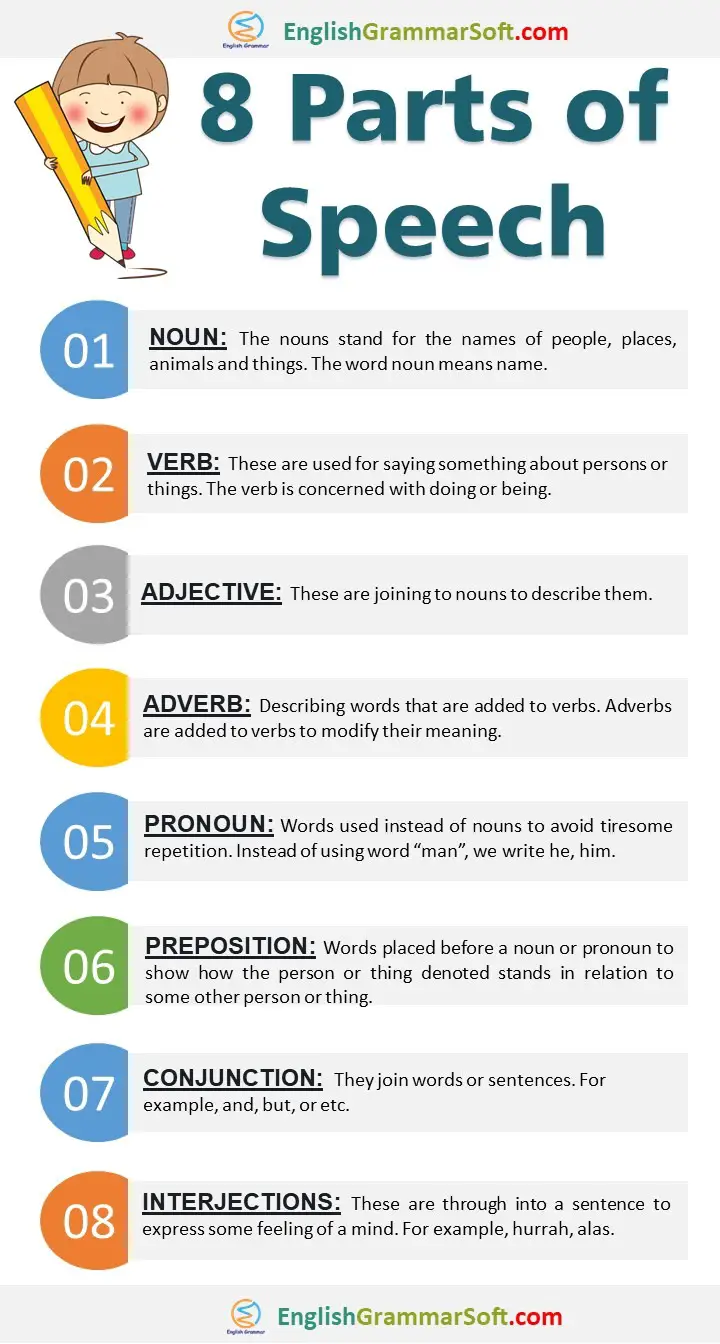
Read also: 71 Idioms with Meaning and Sentences
-
1.
What part of speech tells what is being done in the sentence? Find the best word that matches this definition.
-
A.
Adverb
-
B.
Subject
-
C.
Verb
-
D.
Adjective
-
E.
Preposition
-
-
2.
What is the part of speech that is the last word of a preposition? Find the best word that matches this definition.
-
A.
Verb
-
B.
Adverb
-
C.
Object of preposition
-
D.
Preposition
-
E.
Adjective
-
-
3.
What is the part of speech that tells who is doing something in the sentence? Find the best word that matches this definition.
-
A.
Verb
-
B.
Prepositional phrase
-
C.
Preposition
-
D.
Subject
-
E.
Adverb
-
-
4.
What word is a word used to describe a verb or other modifiers; answers where, when, or how.
Find the best word that matches this definition.-
A.
Verb
-
B.
Prepositional phrase
-
C.
Preposition
-
D.
Adverb
-
E.
Adjective
-
-
5.
What word is a word used to descibe a noun; answers whose, how many, what kind, or which one.
Find the best word that matches this definition.-
A.
Verb
-
B.
Prepositional phrase
-
C.
Prepostion
-
D.
Adverb
-
E.
Adjective
-
-
6.
What type of speech is the word «in» in the following sentence?
The woman in the pink suit fell down suddenly.-
A.
Verb
-
B.
Adjective
-
C.
Preposition
-
D.
Subject
-
E.
Adverb
-
-
7.
What type of speech is the word «suit» in the following sentence?
The woman in the pink suit fell down suddenly.-
A.
Adverb
-
B.
Adjective
-
C.
Preposition
-
D.
Object of the preposition
-
E.
Subject
-
-
8.
What type of speech is the word «Language Arts» in the following sentence?
Have the girls in that room already finished their report for Language Arts?-
A.
Adverb
-
B.
Preposition
-
C.
Object of preposition
-
D.
Adjective
-
E.
Verb
-
-
9.
What type of speech is the word «already» in the following sentence?
Have the girls in that room already finished their report for Language Arts?-
A.
Adverb
-
B.
Verb
-
C.
Adjective
-
D.
Preposition
-
E.
Subject
-
-
10.
What type of speech is the word «finished» in the following sentence?
Have the girls in that room already finished their report for Language Arts?-
A.
Adverb
-
B.
Verb
-
C.
Preposition
-
D.
Object of preposition
-
E.
Adjective
-
-
11.
What type of speech is the word «in» in the following sentence?
Have the girls in that room already finished their report for Language Arts?-
A.
Adverb
-
B.
Verb
-
C.
Preposition
-
D.
Object of preposition
-
E.
Adjective
-
-
12.
What type of speech is the word «room» in the following sentence?
Have the girls in that room already finished their report for Language Arts?-
A.
Adverb
-
B.
Adjective
-
C.
Preposition
-
D.
Object of preposition
-
E.
Subject
-
-
13.
What type of speech is the word «Have» in the following sentence?
Have the girls in that room already finished their report for Language Arts?-
A.
Verb
-
B.
Adjective
-
C.
Preposition
-
D.
Object of the preposition
-
E.
Subject
-
If you’ve ever found yourself wondering what part of speech a word is, you’re not alone. In this lesson, we’ll explore how to answer that question as well as why that answer can seem a bit confusing. You’ll also find a quiz at the bottom of the page so that you can test yourself, along with a free PDF download. Jackpot!
Would you like to make this lesson more interactive?
Download the free ebook.
If you’d like to fill out your answers as you move through this lesson, download the guide before you watch the video.
If you’d like to print it out and you’re serious about conserving the ink in your printer, print only pages 4, 9, 10, and 11.
Pop quiz, hot shot! Let’s say you’re at the grocery store deciding between chunky and creamy peanut butter (tough choice) when someone walks up to you and asks, «What part of speech is the word love?»
Obviously, the first thing to do is run away from this person. But then, your mind might linger on that question, and you might start to wonder Hmm … what part of speech is the word love anyway?
At that point, you would probably think of some example sentences to figure it out.
I love peanut butter.
From this sentence, you might conclude that love is a verb since you know that verbs express action, and love is showing an action in this sentence.
You wouldn’t be wrong, but then you might think of this sentence:
Love for peanut butter brought me to the store today.
Wait a minute! Here, love is a noun. It’s an idea, and it’s the subject of the sentence. What’s the deal? How can love be a verb and a noun?
Here’s a secret about the parts of speech that many people don’t realize:
Many words can function as more than one part of speech.
They will only be doing one part-of-speech job at a time, though. In our example sentences above, we can see that love can be a verb and a noun, and we can also see that it’s doing just one of those jobs in each sentence.
How can you figure out what part(s) of speech a word can be, and how will you know what the word is acting as in any given sentence?
The first thing to do is to study the parts of speech and understand how they work.
Here’s what you can do after you have a sense of what the parts of speech are and how they work:
What part(s) of speech can this word be?
Look up the word in a dictionary. Dictionaries will show you the possible parts of speech that a word can function as. You can use a dictionary that’s an actual book, an online dictionary, or your device’s built-in dictionary. The dictionary will list each word’s possible part of speech, and it will give you definitions for all of the meanings of a word within each part of speech.
What part of speech is this word in this sentence?
In order to figure out how a word is functioning, we need to look at the word within the context of a sentence. Look over your sentence, and then open up your dictionary. Match the meaning of the word in your sentence with the most fitting dictionary definition. Then you’ll be able to tell what part of speech it is in your sentence.
Let’s look at two examples of words acting as different parts of speech.
We’ll look at the words for and iron, and we’ll see them acting as different parts of speech. We’ll also take a peek at what the dictionary says for each word.
What part of speech are the words in bold?
I asked for pie.
I cried, for I knew that the pie was gone.
Where is the iron?
Please iron my shirt.
For
I asked for pie. (preposition)
1. Just below the word that you look up, you’ll find a listing for a part of speech. The first listing is usually the most common way that the word is used. For is most commonly used as a preposition.
2. Next, you’ll find definitions of the word for each part of speech. If there is more than one definition, they’ll be numbered. There are many definitions for for as a preposition, and here you can see two.
3. After the definition, you’ll often find an example of how to use the word as that part of speech and definition. You can see the examples in italics.
I cried, for I knew that the pie was gone. (conjunction)
1. Below all of the definitions for for as a preposition, we can see a listing for another part of speech. It’s here that we see that for can also be a conjunction.
2. Here’s the definition. It’s not numbered because there is only one entry for for as a conjunction.
3. Here is an example sentence for us. (It’s strange, though, that they also used for as a preposition in this example as well as a conjunction!)
Iron
Where is the iron? (noun)
1. The first part of speech listed under iron is noun.
2. The first two definitions of iron as a noun weren’t the ones used in the sentence above, but the third entry was what I was looking for.
3. They don’t give us an example sentence. Boohoo!
Please iron my shirt. (verb)
1. Underneath all of the definitions for iron as a noun, I came here which let me know that iron can also be used as a verb.
2. There’s only one definition for iron as a verb, so they didn’t number this entry.
3. Again, there’s no example sentence. Perhaps everyone at the dictionary company called in sick on the day that they had to write example sentences for iron.
Test Yourself
I. Label the Parts of Speech
Directions: Name the part of speech for the underlined word in each sentence. Use a dictionary if you need one. For extra credit, diagram the sentences. 
1. LIGHT
a) I will light the fire.
b) Can you see that red light?
c) This light jacket isn’t warm enough.
2. FAST
a) Hadley is a fast runner.
b) The 12-hour fast cleared my mind.
c) He drives fast!
3. GENERAL
a) I had a general sense of how it works.
b) The general sank low in his chair.
4. BEFORE
a) Practice piano before you play with your friends.
b) Practice piano before dinner.
5. ROLL
a) Roll the dice.
b) I will eat the soup with a roll.
6. LIKE
a) I like old books.
b) They acted like old friends.
c) The boys had like interests.
7. TILL
a) The kids were awake till midnight.
b) Open the till and count the money.
c) My grandpa, a farmer, would till his soil in the spring.
8. CUP
a) Cup your hands around your mouth and yell.
b) I’ll use the red cup.
9. DRIVE
a) The long drive through the countryside lifted my spirits.
b) I always drive within the speed limit.
10. BLUE
a) Everyone in the family photo wore blue.
b) Jackie lives in the blue house.
Would you like to download this lesson?
- 20 Pages
- Includes all of the instructions and exercises on this page
- 4 pages with blank space to write answers
- 7 pages of answers (All 24 sentence diagrams included)
- Printable
- If you only want to print out the pages where you’ll be writing (I’m looking at you, expensive ink cartridges.), print pages 4, 9, 10, and 11.
- FREE
II. Write Your Own Sentences
Directions: Write your own sentences using the words below. Make sure the word is being used as the part of speech indicated on the left side. Underline the word in your sentence. The first one is done for you. Feel free to use a dictionary!
1. Drive
Noun: The long drive through the countryside lifted my spirits.
Verb: I always drive within the speed limit.
2. Baby
Noun: ___________________________________
Adjective: ________________________________
Verb: ___________________________________
3. Up
Preposition: ________________________________
Adverb: ___________________________________
Answers
I. Label the Parts of Speech
1. LIGHT
a) I will light the fire. VERB
b) Can you see that red light? NOUN
c) This light jacket isn’t warm enough. ADJECTIVE
6. LIKE
a) I like old books. VERB
b) They acted like old friends. PREPOSITION
c) The boys had like interests. ADJECTIVE
2. FAST
a) Hadley is a fast runner. ADJECTIVE
b) The 12-hour fast cleared my mind. NOUN
c) He drives fast! ADVERB
7. TILL
a) The kids were awake till midnight. PREPOSITION
b) Open the till and count the money. NOUN
c) My grandpa, a farmer, would till his soil in the spring. VERB
3. ABOVE
a) I had a general sense of how it works. ADJECTIVE
b) The general sank low in his chair. NOUN
8. CUP
a) Cup your hands around your mouth and yell. VERB
b) I’ll use the red cup. NOUN
4. BEFORE
a) Practice piano before you play with your friends. CONJUNCTION
b) Practice piano before dinner. PREPOSITION
9. DRIVE
a) The long drive through the countryside lifted my spirits. NOUN
b) I always drive within the speed limit. VERB
5. ROLL
a) Roll the dice. VERB
b) I will eat the soup with a roll. NOUN
10. BLUE
a) Everyone in the family photo wore blue. NOUN
b) Jackie lives in the blue house. ADJECTIVE
* The sentence diagrams for 4, 5, 9, and 10 are available in the downloadable version of this lesson.
Answers for II. Write Your Own Sentences are also available in the free, downloadable version of this lesson.
Would you like to download this lesson?
- 20 Pages
- Includes all of the instructions and exercises on this page
- 4 pages with blank space to write answers
- 7 pages of answers (All 24 sentence diagrams included)
- Printable
- If you only want to print out the pages where you’ll be writing (I’m looking at you, expensive ink cartridges.), print pages 4, 9, 10, and 11.
- FREE
Would you like to see another example of this concept? Let’s look at how the word balance can be a noun or a verb, and how it can help you think about your life.
8
13.
Parts of a Sentence.
-
Sentence parts.
General information. -
Principal parts of the sentence: subject,
predicate. -
Secondary parts of the sentence: object, attribute, apposition,
adverbial modifier. -
Independent elements of the sentence: direct address,
parenthesis.
Every sentence can be divided into certain
components which are called parts
of the sentence.
Parts
of the sentence are usually classified into principal
and secondary.
The principal parts of the sentence are subject and the predicate.
The subject
is a person-modifier of the predicate (e.g. I
love.). The predicate
is a process-modifier of the subject-person (e.g. I love.).
They constitute the back-bone of the sentence. The secondary parts of
the sentence are the object, the attribute, the adverbial modifier.
The secondary parts
of the sentence modify the principal parts or each other .The object
is a substance-modifier of a processual part (e.g. I love you.).
The attribute
is a quality-modifier of a substantive part (e.g. He is a good
student.). The adverbial
is a quality-modifier of a processual part or the whole of the
sentence (e.g. He reads well.).
Besides these two kinds of sentence components
there are so-called independent
elements, that is, elements
standing outside the structure of the sentence, and therefore of
lesser importance. The independent elements the parenthetical
enclosure, the addressing enclosure, the interjectional enclosure.
The parenthetical enclosure
is a detached speaker-bound modifier of any sentence-part or the
whole of the sentence (e.g. Maybe
I’ll come.). The addressing enclosure
(address) is a substantive modifier of the destination of the
sentence and hence, from its angle, a modifier of the sentence
as a whole (e.g. Honey,
I love.). The interjectional enclosure
is a speaker-bound emotional modifier of the sentence.
PRINCIPAL PARTS OF THE SENTENCE
SUBJECT
English sentence but the one-member and the
imperative one must have a subject. The subject is one of the
two principal parts of the sentence. The subject can be expressed in
different ways:
-
a noun in the common case (including
substantivized adjectives and participles) (e.g. The
fog is thinning.) -
a nominal phrase with a noun (e.g. A
great number of people were present.) -
a noun in the genitive case (e.g. The
grocer’s was full.) -
a personal pronoun in the nominative case (e.g.
She’s
very beautiful.) -
any other pronoun (e.g. Who
told you this?) -
a numeral or a nominative phrase with a numeral
(e.g. The third
was a young man with a dog.) -
an infinitive, an infinitival phrase or an
infinitive predicative complex (e.g. To
understand is to forgive.) -
a gerund, a gerundial phrase or a gerundial
predicative complex (e.g. Talking
mends no holes.) -
words used as quotations (e.g. His “How
do you do” never sounds cordial
enough.) -
a clause (e.g. What
girls of her sort want is just a
wedding ring.)
From the point of view of its grammatical
value the subject may be either
notional or formal.
The notional subject
denotes or points out a person
(e.g. I know all about it.)
or a non-person (e.g.
To be a friend
takes time.), that is, various kinds of concrete things, substances,
abstract notions or happening.
The formal
subject neither denotes nor points out any person or non-person and
is only a structural element of the sentence filling the
position of the subject. Thus a formal subject functions only as a
position-filler. In English there are two such position-fillers: it
and there.
The formal subject expressed by it is found in two patterns of
sentences: those with impersonal it and those with introductory it.
The formal subject it is impersonal
when it is used in sentences describing various states of nature,
things in general, characteristics of the environment, or denoting
time, distance, other measurements (e.g. It’s spring.).
The formal subject it is introductory
(anticipatory) if it introduces the notional subject expressed by an
infinitive, a gerund, an infinitive/gerundial phrase, a predicative
complex, or a clause (e.g. It was no good coming
there. Is there
anybody there?). The sentence thus
contains two subjects: the formal (introductory) subject it and
the notional subject, which follows the predicate.
The difference between the two structural types lies in that the
pattern with the introductory subject accentuates the idea expressed
by the notional subject, whereas the pattern without it accentuates
the idea expressed in the predicate.
Sentences with a notional subject introduced by
there express the existence or coming into existence of a person or
non-person denoted by the subject. Such sentences may be called
existential sentences or sentences of presentation. They are employed
where the subject presents some new -idea or the most important piece
of information.
PREDICATE
The predicate is the second principal part of the sentence and
its organizing centre, as the object and nearly all adverbial
modifiers are connected with, and dependent on, it.
The predicate may be considered from the semantic or from the
structural point of view.
Structurally the predicate in English expressed by a finite verb
agrees with the subject in number and person. The only exception to
this rule is a compound modal and a simple nominal predicate,
the latter having no verb form at all.
According to the meaning of its components, the
predicate may denote an action, a state, a quality, or an attitude
to some action or state ascribed to the subject. These different
meanings find their expression in the structure of the predicate and
the lexical meaning of its constituents.
From the structural point of view there are two
main types of predicate: the simple
predicate and the
compound predicate. Both these types
may be either nominal or verbal, which gives four sub-groups: simple
verbal (e.g. He runs.),
simple nominal (e.g. Me, a
liar!),
compound verbal, compound nominal.
Compound verbal
predicates may be further classified into phasal
(e.g. She began
to cry.),
modal (e.g. You must
do it.) and
of double orientation (e.g. She is
said to know him.).
Compound nominal
predicates may be classified into nominal
proper (e.g. The girl looked
tired.)
and double
nominal (e.g. The moon rose
red.).
The simple predicate can be of two types: verbal
and nominal. The simple verbal predicate
can be expressed in two ways:
-
a verb in a synthetic or analytical form (e.g. I
was sent in
to get my tea.) -
a verb phrase (e.g. Did you have
a sleep? ).
The simple nominal
predicate does not contain a link verb,
as it shows the incompatibility of the idea expressed by the
subject and that expressed by the predicate; thus in the meaning
of the simple nominal predicate there is an implied negation.
Sentences with the simple nominal predicate are always
exclamatory evidently owing to the implication of a negation or of an
evaluation.
The predicate is mostly separated by a comma, but a comma is not
regarded as a strict rule. These predicates are used in colloquial
English, although not frequently.
The simple nominal predicate can be expressed in
different ways:
-
a noun (e.g. She, a
nun!) -
an adjective (e.g. You sad!)
-
an infinitive or an infinitive phrase (e.g. My
boy insult a gentleman at my table!) -
participle I or a participial phrase (e.g. She
spying!)
The compound predicate consists of two parts: the
notional and
the structural. The structural part
comes first and is followed by the notional part.
From the point of view of meaning the most important part of the
compound predicate is the notional part as it contains the
information about the person or non-person expressed by the subject.
From the point of view of structure the most
important part of the predicate is the first one, since it is
expressed by a finite verb and carries grammatical information about
the person, number, tense, voice, modal, attitudinal and aspective
(phasal) meaning of the whole predicate.
Compound
Verbal Aspect Predicate
The
compound verbal phasal predicate denotes the beginning, duration,
repetition or cessation of the action expressed by an infinitive or a
gerund. It consists of a phasal verb and an infinitive or a gerund.
There are phasal verbs of:
— beginning (e.g. I
come to think that you are right.)
— duration (e.g. He went
on talking.)
— repletion (e.g. I used
to live here.)
— cessation (e.g. Give
up smoking.)
Compound Verbal Modal Predicate
The compound verbal modal predicate consists of a modal part and an
infinitive (or a gerund). It shows whether the action expressed by an
infinitive is looked upon as possible, impossible, obligatory,
necessary, desirable, planned, certain, permissible, etc. In
most cases it denotes the attitude to the action of the person
expressed by the subject or by the speaker.
Modal part can be expressed by:
-
a modal verb (e.g. May
I ask
you a question?) -
a modal expression (e.g. Are
you able to walk
another two miles?) -
an attitudinal verb (e.g. I mean
to find out the truth.)
Compound Nominal Predicate
The compound nominal predicate consists of a link verb and a
predicative (nominal part). The link verb is the structural element
of the predicate, as it joins the subject and the predicative. It
expresses the grammatical categories of person, number, tense,
aspect and mood.
Among the class of link verbs we may distinguish those which have
lost their original lexical meaning (to be, to get), those which have
only partly lost their lexical meaning (to remain, to become, to
grow, to turn, to look, to seem), those which have fully preserved
their lexical meaning but still serve as link verbs followed by a
predicative (to elect, to call, to leave, to keep, to make).
According to their semantic characteristics link
verbs fall into three groups:
-
Being (to be, to feel, to sound, to smell, to
taste, to look, to appear etc.) (e.g. He seemed
bewildered.) -
Becoming (to become, to grow, to turn, to get, to
make etc.) (e.g. The girl will make a
good teacher.) -
Remaining (to remain, to continue, to keep, to
stay etc.). (e.g. She remained vexed with him.)
The
predicative is the notional part of the compound nominal
predicate. It characterizes the person or non-person expressed by the
subject. The characterization may concern the properties of the
person or non-person (the state or quality or quantity of it), the
identity of the person or non-person, that is, what class of persons
or things they belong to.
The predicative can be expressed in different
ways:
-
a noun in the common or in the genitive case
(e.g. I’m a student.) -
a adjective or an adjective phrase (e.g. Her eyes
grew angry.) -
a pronoun (e.g. It’s
me.) -
a numeral (e.g. I’m
the first.) -
an infinitive (or an infinitive phrase or
construction) (e.g. My idea is to go
there myself.) -
a gerund ( or a gerundial phrase or construction)
(e.g. My hobby is dancing.) -
a participle or a
participial phrase (e.g. That sounded
distressing.) -
a prepositional phrase (e.g. She is
on our side.) -
a stative (e.g. She is
asleep.) -
an indivisible group of words (e.g. It is
nine o’clock.) -
a clause (e.g. That’s
what has happened.)
There exist three most typical semantic characteristics of a
predicative
An identifying
predicative expresses equality between
the notion expressed by the predicative and by the subject or means
that they are of the same rank or value (e.g. London is the
capital of Britain.). In this case the
predicative and the subject are position-ally interchangeable. Such
predicatives are expressed by a noun with the definite article.
A classifying
predicative names a class of persons or non-persons to which that
denoted by the subject belongs (e.g. John is
a student.). The predicative in this
case is expressed by a noun with the indefinite article.
A characterizing
predicative denotes a state or quality of a person or non-person and
is expressed by an adjective or a stative (e.g. The room is dark.).
Compound predicates can combine elements of different types. There
can be the following mixed predicates:
-
compound modal nominal (e.g. He must
be Russian.) -
compound modal aspect (e.g. He can’t
continue training.) -
compound aspect nominal (e.g. George
began to be
rather ashamed) -
compound nominal predicate of double orientation
(e.g. He is
said to be very ill.)
SECONDARY PARTS OF THE SENTENCE
OBJECT
The object is a secondary part of the sentence referring to some
other part of the sentence and expressed by a verb, an adjective, a
stative or, very seldom, an adverb completing, specifying, or
restricting its meaning.
The object can be expressed in different ways:
-
a noun in the common case or
a nominal phrase (e.g. I saw the
boys two hours ago.) -
a pronoun (e.g. I don’t know anybody
here.) -
a substantivized adjective or participle (e.g. He
hated the rich.) -
a gerund or a gerundial phrase (e.g. He insists
on coming.) -
any part of speech used as a quotation (e.g. She
called “Ann”
never sounds cordial enough.) -
an infinitive or an infinitive phrase (e.g. She
was glad to see
him.) -
various predicative complexes (e.g. I want it
done at once.) -
a clause (e.g. I don’t know what
it was.) -
a numeral or a phrase with a numeral (e.g. I
found two of them
together.) -
an indivisible group of words (e.g. He found a
number of people at home.)
From the point of view of their value and grammatical
peculiarities, four types of objects can be distinguished in
English.
The
direct object
is a non-prepositional one that follows transitive verbs,
adjectives, or statives and completes their meaning (e.g. I wrote a
poem).
Semantically it is usually a non-person which is affected by the
action of the verb, though it may also be a person or a situation.
The situation is expressed by a verbal, a verbal phrase, a complex/
or by a clause.
The indirect
object also follows verbs, adjectives and statives. Unlike the direct
object, however, it may be attached to intransitive verbs as well as
to transitive ones. Besides, it may also be attached to adverbs,
although this is very rare. From the point of view of their semantics
and certain grammatical characteristics indirect objects fall into
two types: the indirect recipient object and the indirect
non-recipient object.
The indirect
recipient object is attached only to
ditransitive verbs. It is expressed by a noun or pronoun which as a
rule denotes a person who is the addressee or recipient of the action
of the verb. It is joined to the headword either without a
preposition or by the preposition to (occasionally for), thus it can
be non-prepositional
(e.g. He gave me
a book.) and prepositional
(e.g. She didn’t tell it to
me). The indirect recipient object is
generally used with transitive verbs.
The indirect
non-recipient object is attached to
verbs, adjectives, statives and sometimes adverbs. It is usually a
noun denoting an inanimate object, although it may be a gerund, a
gerundial phrase or complex, an infinitive complex or a clause.
Its semantics varies, but it never denotes the addressee (recipient)
of the action of the governing verb. The indirect non-recipient
object can only be joined to its headword by means of a preposition
(e.g. One must always hope for the
best.).
The cognate
object is a non-prepositional object which is attached to otherwise
intransitive verbs and is always expressed by nouns derived from, or
semantically related to, the root of the governing verb (e.g. He died
the death of a hero).
The term «the
retained object» is to be applied
in case an active construction is transformed into a passive one and
the indirect object of the active construction becomes the
subject of the passive construction (e.g. Mary was given the
prize.). The second object, the direct
one, may be retained in the transformation, though the action of
the predicate-verb is no more directed upon it. Therefore it is
called a retained object.
ATTRIBUTE
The attribute is a secondary part of the sentence
which characterizes person or non-person expressed by the headword
either qualitatively, quantitatively, or from the point of view of
situation. An attribute forms a nominal phrase with its
headword.
The
attribute can either precede or follow the noun it modifies.
Accordingly
we use terms prepositive
and postpositive
attribute. The
position of an attribute with respect to its head-word depends partly
on the morphological peculiarities of the attribute itself, and
partly on stylistic factors.
The size of the prepositive attributive
phrase can be large in ME. Whatever is included between the article
and the noun, is apprehended as an attribute.
An attribute may be expressed by different parts of speech:
-
a adjective or an adjective phrase (e.g. I’ve
never seen a better place.) -
a pronoun or pronominal phrase (e.g. Here’s
some
money for you.) -
a numeral (e.g. Is it part two
of the book?) -
a noun in the common case (e.g. It happened on a
December evening.) -
a prepositional nominal phrase (e.g. He was a man
of very regular habits.) -
a pronoun in the posessive case (e.g. It’s his
friend.) -
a stative (e.g. She gazed at us with an aloof
air.) -
a participle or a
participial phrase (e.g. He made his way
down the creaking
stairs.) -
a gerundial phrase or a gerundial complex (e.g.
There’s no chance of your seeing
him.) -
an infinitive or an infinitive phrase or
construction (e.g. This is a book for
you to read.) -
a quotation group (e.g. I don’t like his “don’t
talk to me” air.) -
an adverb or adverbial phrase (e.g. No sounds
came from the quarters above.) -
a clause (e.g. Some called me by the name which
no one here knew.)
From the point of view of their connection with
the headword and other parts of the sentence, attributes may be
divided into non-detached
(close) (e.g. He was a big strong man.) and detached
(loose) ones (e.g. Big and strong,
he impressed us greatly.).
Non-detached attributes form one sense group with their headword and
are not separated from it by commas. They generally adjoin the
headword, either premodifying, postmodifying, or embedding it, and
are connected with other parts of the sentence only through the
headword.
A detached attribute is only loosely connected with its headword and
is often optional from the point of view of structure, although very
important semantically. It forms a separate sense group in speech and
is accordingly separated by commas in writing. A detached attribute
may be placed in preposition, post-position, or often at some
distance from the headword.
APPOSITION
An apposition is a part of the sentence expressed by a noun or
nominal phrase and referring to another noun or nominal phrase (the
headword), or sometimes to a clause.
The
apposition may give another designation to, or description of, the
person or non-person, or else put it in a certain class of persons or
non-persons. In the latter case it is similar to an attribute, as it
characterizes the person or non-person denoted by the headword.
Like the attribute, the apposition ‘may be in preposition or
postposition. However, unlike the attribute, which is always
subordinated to its headword and is usually connected with other
parts in the sentence only through it, words in apposition are, at
least syntactically, coordi-1 nated parts, that is, both the headword
and the apposition are constituents of the same level in the
sentence.
From the point of view of their relation to the
headword, appositions, like attributes, are subdivided into
non-detached
(close) (e.g. Dr
and Mrs
Smith were left alone.) and detached
(loose) ones (e.g. He knows about
everything – a man of the world.).
Non-detached appositions form one sense group with
their headword and very often enter into such close relation with it
that the two words form one whole. This is especially true in the
case of titles, military ranks, professions, kinship terms,
geographical denotations, etc., used as apposition.
Detached or loose appositions form separate sense groups and are
wider in their meaning than close appositions: they may give
identification, explanation, etc., especially when referring to
pronouns. They may follow the headword immediately or be separated
from it.
ADVERBIAL MODIFIER
The adverbial modifier (or the adverbial) is a secondary part of
the sentence which modifies another part of the sentence expressed
either by a verb (in a finite or non-finite form), or an adjective,
or a stative, or an adverb.
In case it modifies a verb the adverbial characterizes the action or
process expressed by the verb and denotes its quality, quantity, or
the whole situation. Adverbials modifying adjectives, statives and
adverbs usually denote degree or quantity. Adverbials are
structurally more independent of the verb than objects. Their
use is often optional. Adverbials are obligatory when the
sentence structure demands one or when their absence changes the
meaning of the verb.
Non-obligatory adverbials are those which are not necessary for the
structure of the sentence. They neither influence the meaning of the
verb form, nor change the structure or the meaning of the rest of the
sentence, no matter how important they are from the
communicative
viewpoint.
Non-obligatory adverbials are those which are not necessary for the
structure of the sentence. They neither influence the meaning of the
verb form, nor change the structure or the meaning of the rest of the
sentence, no matter how important they are from the communicative
viewpoint.
Detached adverbials being more loosely related to the modified parts
of the sentence than non-detached adverbials are never
obligatory. They are separated from the rest of the sentence by
intonation in speaking and by commas in writing.
Adverbials are grouped according to their ways of expression, their
structure and their meaning.
An adverbial modifier may be expressed by
different parts of speech:
-
an adverb or adverbial phrase (e.g. Jane sings
beautifully.) -
a noun, a pronoun or a numeral preceeded by a
preposition a prepositional nominal phrase (e.g. He was a man of
very regular habits.) -
a noun without a preposition or a
non-prepositional noun phrase (e.g. We meet every
day.) -
a non-finite form of the verb (an infinitive,
gerund or participle) (e.g. The task is easy enough to
do.) -
a predicative complex (a gerundial, for-to-infinitive,
non-prepositional or prepositional absolute costruction) -
a adjective, adverb, participle, noun, infinitive, prepositional or
infinitive or participial phrase introduced by a conjunction. -
a clause (as part of a complex sentence) (e.g.
Won’t you stay till the rain stops?).
From the point of view of its structure the
adverbial modifier may be simple
(e.g. We started early.), phrasal (e.g.
We started at five in the morning.),
complex (e.g. John sat with
his elbows on the table and his hands clasped.),
clausal (e.g. When
the cat is away, the mice will play.).
Semantically adverbials denote place
(e.g. John was born in Australia),
time (e.g. We shall meet tomorrow.),
manner (e.g. Hooper danced badly,
but energetically.),
cause (e.g. She did it out
of pity.),
purpose (e.g. Jane has come to
help us.),
result (e.g. It is too
cold to go out.),
condition (e.g. But
for you I wouldn’t be here at all.),
concession (e.g. With
all his faults, I like him.),
attendant circumstances (e.g. He woke
up to see her face.),
comparison
(e.g. Tom speaks French
like a Frenchman.),
degree (e.g. The story is extremely
long.), measure (e.g.
The room measures 30 feet across.),
exception (e.g. The road was empty
except for a few cars.),
thus forming semantic classes, such as
adverbials of place, time, etc..
The semantic class of
an adverbial may be identified directly
(absolutely) (e.g. I saw him yesterday. (an adverbial modifier of
time)) or indirectly
(relatively) (e.g. She shook with fear. (an adverbial modifier of
reason)). It is identified directly by lexical meaning of the word or
phrase used as an adverbial. In other cases the semantic type is
identified relatively, that is, only through the relationship of
the adverbial to the modified part of the sentence, as is often
the case with participles, infinitives, and some prepositional
phrases.
INDEPENDENT ELEMENTS OF THE SENTENCE
Independent elements of the sentence are not
grammatically dependent on any particular part of the sentence, they
refer to the sentence as a whole. Only occasionally they may
refer to a separate part of the sentence. The independent element may
consist of a word or a phrase. Its position is more free than that of
any other parts of the sentence and accordingly it may occur in
different positions in the sentence.
There are several types of independent elements:
the parenthetical enclosure, the addressing enclosure, the
interjectional enclosure.
The addressing
enclosure is the name of a person (or
occasionally a non-person) to whom the rest of the sentence is
addressed. It may be emotionally charged or neutral, but semantically
it does not influence the sentence.
The parenthetical
enclosure may:
-
express the speaker’s attitude to the relation
between what is expressed in thу sentence
and reality (e.g. Oh, we can’t go.) -
connects the sentence it belongs to with the preceding or the
following one expressing different relations (e.g. Finally the whole
party started walking.) -
specifies what is said in the sentence or express a comment (e.g.
Frankly speaking, he had been amazed at his failure.)
As
a rule a parenthesis refers to the sentence (or clause) as a whole.
Sometimes/ however, a parenthesis refers only to, a secondary part of
the sentence.
As to its morphological nature, a parenthesis can
be expressed in different ways:
— a modal word (e.g. Perhaps
they will come soon.)
— an interjection (e.g. You like her, eh?)
— a conjunct (an adverb combining the
function of a parenthesis with that of a connector)
(e.g. Besides,
he doesn’t love you.)
— a prepositional phrase (e.g. In
my opinion you are wrong.)
— an infinitive phrase (e.g. That was, so
to speak, another gift for you.)
— a participial phrase (e.g. Generally
speaking I think you’re right.)
— a clause (e.g. As it was, Nell departed with surprising docility.)
B.S.
Khaimovich and B.I. Rogovskaya single
out:
Extensions – adjuncts of adjectives, adverbs and adlinks in a
sentence. They differ from complements and attributes in being
usually modifiers of modifiers, or tertiaries (Jespersen), e.g.
The
creature’s eyes were alight with a somber frenzy.
Connectives
– linking-words considered as a secondary aprt of the sentence.
They are mostly prepositions and conjunctions,
e.g.
She
played and sang to him.
They usually connect 2 words both or neither of which might be
regarded as their head-words. The words they connect belong to
various parts of speech.
Specifiers –
not adjuncts of definite parts of speech like complements, attributes
or extensions. They do not link any part of the sentence like
connectives. They are not parenthetical elements. So they make a
distinct secondary part of the sentence. The name just indicates the
function, e.g.
I was only brilliant once.


